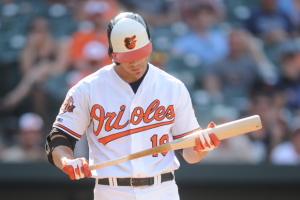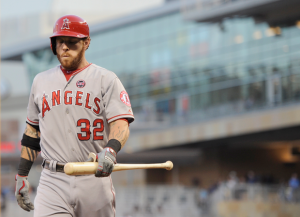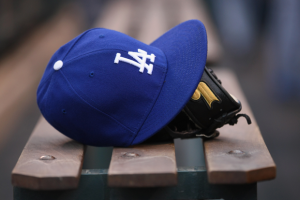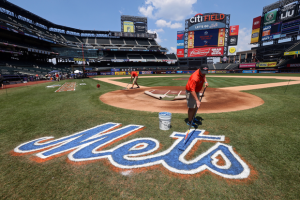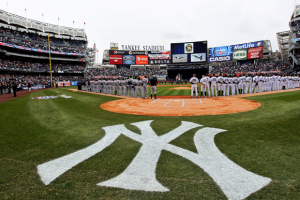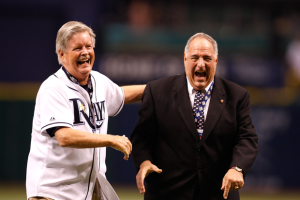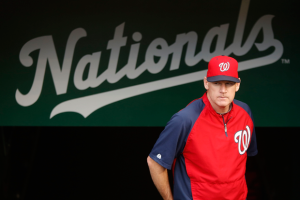Pro Image Sports customers show their allegiances by stockpiling product from their favorite team. Some of the most iconic American teams, and their nicknames, hail from Major League Baseball. Mentalfloss.com writer Scott Allen recently posted an article giving a quick background on how all 30 teams received their names. Enjoy!
ARIZONA DIAMONDBACKS
In 1995, the expansion franchise’s ownership group asked fans to vote from among a list of nicknames that included Coyotes, Diamondbacks, Phoenix, Rattlers, and Scorpions. Diamondbacks, a type of desert rattlesnake, was the winner, sparing everyone the mindboggling possibility of a team located in Phoenix, Arizona, called the Arizona Phoenix.
ATLANTA BRAVES
The Braves, who played in Boston and Milwaukee before moving to Atlanta in 1966, trace their nickname to the symbol of a corrupt political machine. James Gaffney, who became president of Boston’s National League franchise in 1911, was a member of Tammany Hall, the Democratic Party machine that controlled New York City politics throughout the 19th century. The Tammany name was derived from Tammamend, a Delaware Valley Indian chief. The society adopted an Indian headdress as its emblem and its members became known as Braves. Sportswriter Leonard Koppett described Gaffney’s decision to rename his team, which had been known as the Doves, in a 1993 letter to the New York Times: “Wouldn’t it be neat to call the team the ‘Braves,’ waving this symbol of the Democrats under the aristocratic Bostonians? It wouldn’t bother the fans.” And it didn’t, especially after the Braves swept the Philadelphia Athletics in the 1914 World Series.
BALTIMORE ORIOLES
When the St. Louis Browns moved to Baltimore in 1954, the franchise was rebranded with the same nickname of the Baltimore team that dominated the old National League in the late 1890s. That team, which featured the likes of Wee Willie Keeler and John McGraw, was named after the state bird of Maryland. The orange and black colors of the male Oriole bird resembled the colors on the coat of arms of Lord Baltimore.
BOSTON RED SOX
The team that became known as the Red Sox began play ““ wearing dark blue socks, no less ““ as a charter member of the American League in 1901. With no official nickname, the team was referred to by a variety of monikers, including Bostons and Americans, as in American League. In 1907, Americans owner John Taylor announced that his team was adopting red as its new color after Boston’s National League outfit switched to all-white uniforms. Taylor’s team became known as the Red Sox, a name popularized by the Cincinnati Red Stockings from 1867-1870 and used by Boston’s National League franchise from 1871-1876.
CHICAGO CUBS
Chicago’s first professional baseball team was known as the Chicago White Stockings. When the team began to sell off its experienced players in the late 1880s, local newspapers began to refer to the club as Anson’s Colts, a reference to player-manager Cap Anson’s roster of youngsters. By 1890, Colts had caught on and Chicago’s team had a new nickname. When Anson left the team in 1897, the Colts became known as the Orphans, a depressing nickname if there ever was one. When Frank Selee took over managerial duties of Chicago’s youthful roster in 1902, a local newspaper dubbed the team the Cubs and the name stuck.
CHICAGO WHITE SOX
In 1900, Charles Comiskey moved the St. Paul Saints to the South Side of Chicago. The team adopted the former nickname of its future rivals (the Cubs) and became the White Stockings, which was shortened to White Sox a few years after the club joined the American League in 1901.
CINCINNATI REDS
The Cincinnati Red Stockings, so named because they wore red socks, were baseball’s first openly all-professional team. In 1882, Cincinnati’s entry in the newly formed American Association took the same name and retained it after moving to the National League in 1890. Red Stockings eventually became Redlegs, and Redlegs was shortened to Reds. Before the 1953 season, club officials announced that the team would once again officially be known as the Cincinnati Redlegs. Around the same time, the team temporarily removed “Reds” from its uniforms. As the AP reported in 1953, “The political significance of the word ‘Reds’ these days and its effect on the change was not discussed by management.”
CLEVELAND INDIANS
Cleveland’s baseball team was originally nicknamed the Naps after star player-manager Napoleon Lajoie, so when the team cut ties with Lajoie after the 1914 season, it was in the market for a new name. Club officials and sportswriters agreed on Indians in January 1915. The Boston Braves’ miraculous World Series triumph may have been part of the inspiration behind Cleveland’s new moniker.
COLORADO ROCKIES
When team officials announced that Denver’s expansion team would begin play in 1993 as the Colorado Rockies, some fans couldn’t help but question why the team was adopting the same nickname as the city’s former NHL franchise, which averaged an abysmal 19 wins per season from 1976 to 1982. “I think for us to compare a failed hockey franchise 10 years ago is nonsense,” Rockies CEO John Antonucci said. “We feel very strongly that Colorado Rockies might be one of the strongest names in all of professional sports.” According to surveys conducted by Denver’s daily newspapers, fans preferred the nickname Bears, which had been used by Denver’s most famous minor league team. “The name we picked”¦it’s strong, enduring, majestic,” Antonucci said.
DETROIT TIGERS
Detroit’s original minor league baseball team was officially known as the Wolverines. The club was also referred to as the Tigers, the nickname for the members of Michigan’s oldest military unit, the 425th National Guard infantry regiment, which fought in the Civil War and Spanish-American War. When Detroit joined the newly formed American League in 1901, the team received formal permission from the regiment, which was known as the Detroit Light Guard, to use its symbol and nickname.
MIAMI MARLINS
The Marlins take their name from the minor league Miami Marlins that called South Florida home from 1956-1960, 1962-1970, and 1972-1988. Owner Wayne Huizenga hoped to give his expansion team, which entered the league in 1993, more regional appeal by including Florida in the name. However, when the Marlins moved into their new baseball-only stadium in 2012, they became the Miami Marlins.
HOUSTON ASTROS
Houston’s baseball team was originally known as the Colt .45’s, but team president Judge Roy Hofheinz made a change “in keeping with the times” in 1965. Citing Houston’s status as “the space age capital of the world,” Hofheinz settled on Astros. “With our new domed stadium, we think it will also make Houston the sports capital of the world,” Hofheinz said. The change was likely also motivated by pressure from the Colt Firearms Company, which objected to the use of the Colt .45 nickname.
KANSAS CITY ROYALS
When Kansas City was awarded an expansion franchise in 1969, club officials chose Royals from more than 17,000 entries in a name-the-team contest. Sanford Porte, one of 547 fans who submitted Royals, was awarded an all-expenses-paid trip to the All-Star Game. Porte submitted the name because of “Kansas City’s position as the nation’s leading stocker and feeder market and the nationally known American Royal Livestock and Horse Show. “¦ Royalty stands for the best—that’s another reason.” Coincidentally, Kansas City’s Negro League team was nicknamed the Monarchs.
LOS ANGELES ANGELS OF ANAHEIM
Los Angeles gained a second major league team in 1961 when the Los Angeles Angels entered the American League. The nickname had been used by Los Angeles’ Pacific Coast League team from 1903-1957. The team was renamed the California Angels in 1965 and became the Anaheim Angels after the Walt Disney Company took control of the team in 1997. While the team’s lease with the city requires that Anaheim be a part of the team name, owner Arte Moreno changed the team’s name to include Los Angeles in 2005 in hopes of tapping into the L.A. media market. The result is one of the most absurd names in all of professional sports.
LOS ANGELES DODGERS
The Dodgers trace their roots to Brooklyn, where the team was known as the Bridegrooms, Superbas, and, beginning in 1911, the Trolley Dodgers. The Dodgers nickname referenced the pedestrians who dodged the trolleys that carried passengers through the streets of Brooklyn. While the team was known as the Robins from 1914 to 1931, in honor of legendary manager Wilbert Robinson, the nickname switched back to Dodgers when Robinson retired. When Walter O’Malley moved the franchise to Los Angeles after the 1957 season, he elected to keep the name.
MILWAUKEE BREWERS
The Brewers nickname, a nod to Milwaukee’s beer industry, was used off and on by various Milwaukee baseball teams during the late 19th century. When the expansion Seattle Pilots relocated to Milwaukee after one failed season in 1969, the team adopted the traditional Brewers nickname under the ownership of Bud Selig.
MINNESOTA TWINS
Minneapolis and St. Paul, which are separated by the Mississippi River and collectively known as the Twin Cities, argued for years over where an expansion team in Minnesota, should one arrive, would call home. When the Washington Senators moved to Minneapolis in 1961, club officials settled on Twins as the team nickname and unveiled an emblem showing two baseball players with hands clasped in front of a huge baseball.
NEW YORK METS
Team officials asked fans to choose a nickname from among 10 finalists when New York was awarded an expansion National League franchise in 1961. The finalists were Avengers, Bees, Burros, Continentals, Jets, Mets, NYBS, Rebels, Skyliners, and Skyscrapers. The team received 2,563 mailed entries, which included 9,613 suggestions, and 644 different names. Mets was the resounding winner, followed by two nicknames that weren’t among the team’s 10 suggestions—Empires and Islanders. As the New York Times noted, “what the fans will call the team when it begins play, of course, will depend in part on how it performs.” One of the reasons that team officials chose Mets was because “it has a brevity that will delight headline writers.” Another reason was the nickname’s historical baseball association. The New York Metropolitans, often called the Mets, played in the American Association from 1883 to 1888.
NEW YORK YANKEES
In 1903, the original Baltimore Orioles moved to New York, where they became the Highlanders. As was common at the time, the team, which played in the American League, was also known as the New York Americans. New York Press editor Jim Price coined the nickname Yanks, or Yankees, in 1904 because it was easier to fit in headlines.
OAKLAND ATHLETICS
The Athletics nickname is one of the oldest in baseball, dating to the early 1860s and the Athletic Baseball Club of Philadelphia. In 1902, New York Giants manager John McGraw referred to Philadelphia’s American League team as a “white elephant.” The slight was picked up by a Philadelphia reporter and the white elephant was adopted as the team’s primary logo. The nickname and the elephant logo were retained when the team moved to Kansas City in 1955 and to Oakland in 1968.
PHILADELPHIA PHILLIES
Founded in 1883 as the Quakers, the franchise changed its nickname to the Philadelphias, which soon became Phillies. New owner Robert Carpenter held a contest to rename the team in 1943 and Blue Jays was selected as the winner. While the team wore a Blue Jay patch on its uniforms for a couple of seasons, the nickname failed to catch on.
PITTSBURGH PIRATES
After the Players’ League collapsed in 1890, the National League’s Pittsburgh club signed two players, including Lou Bierbauer, whom the Philadelphia Athletics had forgotten to place on their reserve list. A Philadelphia sportswriter claimed that Pittsburgh “pirated away Bierbauer” and the Pirates nickname was born.
SAN DIEGO PADRES
When San Diego was awarded an expansion team in 1969, the club adopted the nickname of the city’s Pacific Coast League team, the Padres. The nickname, which is Spanish for father or priest, was a reference to San Diego’s status as the first Spanish Mission in California.
SAN FRANCISCO GIANTS
The New York Giants moved to San Francisco in 1957 and retained their nickname, which dates back to 1885. It was during that season, according to legend, that New York Gothams manager Jim Mutrie referred to his players as his “giants” after a rousing win over Philadelphia.
SEATTLE MARINERS
Mariners was the winning entry among more than 600 suggestions in a name-the-team contest for Seattle’s expansion franchise in 1976. Multiple fans submitted the nickname Mariners, but the team determined that Roger Szmodis of Bellevue provided the best reason. “I’ve selected Mariners because of the natural association between the sea and Seattle and her people, who have been challenged and rewarded by it,” said Szmodis, who received two season tickets and an all-expenses-paid trip to an American League city on the West Coast.
ST. LOUIS CARDINALS
In 1899, the St. Louis Browns became the St. Louis Perfectos. That season, Willie McHale, a columnist for the St. Louis Republic reportedly heard a woman refer to the team’s red stockings as a “lovely shade of Cardinal.” McHale included the nickname in his column and it was an instant hit among fans. The team officially changed its nickname in 1900.
TAMPA BAY RAYS
Vince Naimoli, owner of Tampa Bay’s expansion team, chose Devil Rays out of more than 7,000 suggestions submitted by the public in 1995. The reaction was not positive. “So far, I’ve fielded about 20 phone calls protesting Devil Rays, and most of the callers have described themselves as Christians who are upset about the word devil,” a Tampa Tribune columnist told a reporter less than a week after the nickname was announced. Naimoli reportedly wanted to nickname his team the Sting Rays, but it was trademarked by a team in the Hawaiian Winter League. The team dropped the “Devil” after the 2007 season and the curse that had plagued the franchise for the previous decade was apparently lifted, as Tampa Bay made a surprising run to the World Series the following season.
TEXAS RANGERS
A second franchise named the Senators left Washington in 1972, this time for Arlington, Texas. Owner Robert Short renamed the team the Rangers after the Texas law enforcement agency that was formed under Stephen F. Austin in the 1820s.
TORONTO BLUE JAYS
More than 30,000 entries were received during a five-week name-the-team contest. A panel of 14 judges, including 10 Toronto media members, selected 10 finalists. From that list, the club’s board of directors settled on Blue Jays. “The Blue Jays was felt to be the most appropriate of the final 10 names submitted,” according to a statement issued by the board’s chairman, R. Howard Webster. “The blue jay is a North American bird, bright blue in color, with white undercovering and a black neck ring. It is strong, aggressive and inquisitive. It dares to take on all comers, yet it is down-to-earth, gutsy and good-looking.”
WASHINGTON NATIONALS
Washington’s original baseball team was interchangeably referred to as the Senators and Nationals, or Nats for short, for most of its time in the District before relocating to Minnesota in 1960. Washington’s 1961 expansion franchise was known almost exclusively as the Senators until it moved to Texas after the 1971 season. When the Montreal Expos relocated to the nation’s capital in 2005, the team revived the Nationals nickname.
All images courtesy of Getty Images
Request Info


